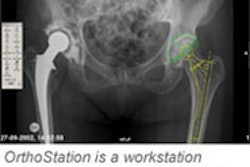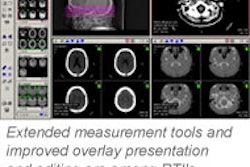Requiring PACS vendors to supply a DICOM data conversion engine is a great way to help digital management customers, according to researchers from Montefiore Medical Center in New York City.
While many PACS vendors advertise their archives as DICOM-compliant, the reality is that this compliance applies to the database that topologically sits in front of the archive, said Dr. Nogah Haramati. Haramati discussed the topic in a presentation at the 2003 RSNA meeting in Chicago.
"PACS data archives are, by necessity, proprietary," Haramati said.
DICOM standards such as "Part 10: Media storage and file format for media interchange," and "Part 12: Media formats and physical media for media interchange," apply only to some removable media (such as optical, CD, DVD, and some floppy storage), Haramati said. They don’t apply to spinning disc, tape, and other fixed or high-capacity media, he said.
As a result, vendors typically set up a DICOM service class provider (SCP) database as a front end, which receives DICOM C-Store messages and responds to DICOM query/retrieve requests. The database stores the image data in whatever proprietary format the vendor selects, Haramati said. And while the use of the DICOM C-Find service (a command that basically searches the DICOM database) is fine for isolated actions, it is very inefficient for migrating entire archives.
"If you want to migrate a mass archive, DICOM query/retrieve is not the way to do it," he said.
Query/retrieve also makes it more difficult to switch vendors, Haramati said. Converting an existing archive from one vendor’s format to another’s requires an expensive and customized conversion, he said. That task is complicated if the physical archive is aging, especially if it doesn’t operate in a storage-area network (SAN) environment.
Archive conversion engine
To improve the situation, Montefiore developed a specification for a data conversion engine that utilizes standard DICOM transactions for automated DICOM conversion in the background.
It requires the vendor to supply an updated copy of the DICOM SCP database with the demographic data and image data, or other key information depending on how the particular vendor's archiving functions. The specification then employs the DICOM C-Move service to get the image data and creates a DICOM "envelope" in the engine. At that point, DICOM C-Store is utilized to send this data to another DICOM SCP database node, Haramati said.
This customer tool can be used for bulk migrations, and users can select parameters for migrating archives, Haramati said.
"You can use (the engine) for migrating archives in a non-SAN environment or in a SAN environment for changing vendors, or if different enterprises merge and decide they want to have common DICOM SCP archives and want to merge their archives," he said.
Montefiore recently signed with a PACS vendor that has contractually guaranteed to supply this archive conversion engine. The company will maintain it throughout the service period and for a specific interval after service has been discontinued. The institution can use the engine at will, with no notification to the vendor required, Haramati said.
AuntMinnie.com staff writer
December 22, 2003
Related Reading
The year of the Uni-PACS: A view from the RSNA floor, December 11, 2003
Large-scale PACS initiatives require on-site DICOM testing, December 4, 2003
UCLA’s strategy on long-term image storage yields results in pricing negotiations, December 4, 2003
RIS-PACS integration delivers improved interpretation, reporting times, December 1, 2003
Workflow analysis can ease scheduling woes, November 28, 2003
Copyright © 2003 AuntMinnie.com



















